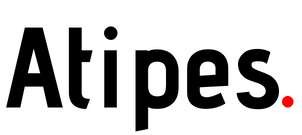From Freemium to Premium: How to Upsell Users in PLG
Product-led is changing the way sales- and marketing-led companies look at acquisition, and many forward-thinking SaaS businesses are already working hard to adopt a PLG motion.
While product-led growth can be an excellent way to move the needle and encourage business success, strategic decision-making – as to when and how to introduce a product in the buying cycle – has become crucial.
A freemium model is one of the dominant tactics used in PLG customer acquisition. At its core, freemium gives instant access to basic or limited features of the software free of charge while also offering additional/more advanced features and services at a premium.
Having a free forever product can help you take a good chunk out of a market. For the math to work in your favor, though, you’ll need to have a significant volume of users signing up, and have a product that does something much better than your competitors.
One SaaS company that has successfully revolutionized its category by leveraging a freemium model is ClickUp – an all-in-one cloud-based collaboration and project management tool that has raised $540M in funding.
ClickUp’s VP of Operations, Aaron Cort, shares that freemium creates an organic flow where people eventually want to start using more and more parts of the product.
In effect, the main difference between a freemium seeker and a potential paying customer lies in their user behavior.
When identifying signals that users are ready for upselling, Aaron adds that “it’s all based on usage, trying the product, and having a workspace as the primary foundation for every behavior and then naturally getting people to use the product.”
Set Limits on Usage
our product to scale alongside your customers’ needs, and one of the most effective ways to make sure they convert to the paid plan is by setting limits inside the product.
You can think of it like this: a user may not need all of your features when they first sign up. As they grow, however, their needs often evolve as well.
This makes it easier for your product to become an influential part of your customers’ workflow and more difficult for them to switch to another solution when they run into the limits that you’ve placed on your freemium plan.
When encouraging users to take the next step, you can:
Limit features: Offer and promote extra features and enhanced functionality of the available ones in the paid upgrades
Limit integrations: Set a limit on connecting and passing information to and from other applications
Limit quantity: Add storage limit, data processing quotas, or monthly credit
Limit support: Implement tiered access to customer service and support resources
By limiting usage or access in your product, you create friction for customers on the free-level plan. In turn – provided that your product is valuable to those users – this tactic will encourage them to upgrade.
Note: For this strategy to work, you need to strike a balance between value and comfortability. This means that the limitation should leave users wanting more of your product, yet not so much that they fail to see its core value. To walk the freemium tightrope, you’ll need a deep understanding of your customers’ needs and the value they actually get from your product, as well as know just how much to give away in your freemium.
Leverage Relevant Paid Acquisition Tactics
If you want to attract premium users, you need to be hyper-targeted, match the audience with relevant messaging, and allocate the right PPC budget.
ClickUp is bidding for a number of conversion objectives. That said, Aaron shares that they primarily optimize for the best quality of users within the workspace acquisition piece that allow for the highest predictability (for becoming paid customers).
“Which is basically just serving better ads to the right people at the right time. That airflow is being fed back to ad platforms to learn, and as you spend more on ad platforms your quality of conversions will increase over time,” ClickUp’s VP of Operations explains.
With a freemium model, the signals of users who are most likely to graduate from free forever to paid plans can be sent as offline conversions back to the ad platform. In turn, the ad platform can bid to value rather than to a blanked target CPA.
This is also known as value-based bidding, or target ROAS.
Within Google Ads, target ROAS is a smart bidding strategy that leverages AI-powered technology to optimize for conversions or conversion value.
In SaaS, value-based bidding is especially beneficial for companies with tiered models because it enables you to assign unique values to each conversion type and let Google’s algorithm take a portfolio bidding approach across an entire group of campaigns.
ClickUp’s Strategy for Building a PLG Organic Growth Foundation
As a PLG company, ClickUp knows that an organic growth strategy goes above and beyond keywords and content marketing tactics.
To grow your user base and increase your revenue, you need to create a PLG marketing strategy that involves your marketing, engineering, and product teams to entice your target audience into trying out your product and, essentially, becoming premium plan users.
Some of the biggest revenue wins ClickUp got, in terms of both total user-based and net new revenue, were from organic.
As their organic efforts gained momentum, they also became a key function of paid search. Aaron explains that as you’re spending more on performance, your organic lift will also increase.
He notes, however, that “[at ClickUp] we do have a very strong community, content marketing, and SEO foundation that is helping fuel that and have continued to as we’ve grown. So, paid marketing and performance layers on top of that.”
Aaron further credits the brand’s organic strategy success to the major investments they’ve done with their brand and creative efforts.
Using the Halo Effect to Build a Stronger Brand
To a large extent, Aaron attributes the growth of ClickUp’s brand strength to the halo effect.
The halo effect is a fascinating concept that is built around the idea that we tend to form a positive impression of something – whether a person, brand, or product – because it’s associated with something else we feel positively about.
For instance: if one product in a range gets great reviews, we’re more likely to believe that all products in that range are good, too. Even more, we often like a whole brand based on one value we strongly align with.
Ultimately, if you can get your audience to love your brand, chances are, they will likely love your product, as well.
“It’s one of those things that’s extremely important. It helps you position as you’re growing your company,” Aaron shares.
While building your brand organically is crucial, Aaron also notes that you need to protect your brand name and position in SERPs. “If you’re not spending to protect your brand as you grow,” he says, “your competitors will do it, and they will do it gladly. It’s just something you have to do over time.”
Using Creatives to Invoke Emotion
On the creative side, Aaron from ClickUp shares that they strive to create videos and overall creative content “that actually evokes emotion and that is actually relevant to what’s happening right now.”
Perhaps unsurprisingly, when you center on great storytelling and make an emotional connection with your audience, it becomes easier to steer them to the desired outcome.
So where do you start?
Researchers at Cornell University conducted a study on half a million users where they altered the amount of positive and negative content appearing on the users’ Facebook feed.
The result? Emotional synchronization – when people saw more positive feeds, they published more positive posts.
This, combined with the increasing demand for good news, means that leveraging happiness is a great opportunity to affect the well-being of your target audience while enhancing your brand name.
You can leverage happiness through creatives that:
Amuse the user. Laughter and humor have long been tried-and-true tools for connecting with the viewer and increasing engagement.
Inspire your target audience. If your users are following you on social media, chances are they want to hear from your brand and would appreciate seeing your inspirational achievements.
How ClickUp Disrupted and Dominated a Red Ocean Market
Simply put: if you’re competing in a red ocean, you’re fighting to capture existing demand. In a blue ocean, you are the one creating demand.
As a collaborative workspace and project management solution, ClickUp is competing in a red ocean category.
To break through the cut-throat competition, ClickUp decided to focus on what was missing in their category – rapid pace of innovation, AI-powered project management features, and a strong focus on what more these solutions can do for people.
Although there are plenty of product management and productivity tools, ”they don’t make you as productive because everyone is using a different one, and you have to use all these nuanced areas to manage it,” Aaron says.
ClickUp’s competitive edge? Allowing users to build a lot within the product natively.
Effectively, the company has created an all-in-one suite that helps streamline your workflow and enables you to manage teams and any type of work with project management that flexes to the team’s needs.
ClickUp’s VP of Operations further adds: “In our space, given how competitive it is, I think we may or may not be one of the last movers to pick things up a little bit, but you see a lot changing now as a result.”
Unlocking Expansion Opportunities Within Product-Led Growth
Product is now the growth engine for many SaaS companies. Yet, finding the most efficient way to unlock revenue opportunities and drive product-led expansion throws many of them for a loop.
The first step to driving product-led expansion is to dig into usage data. Those insights will be extremely helpful in cutting through the noise, defining your scope, and empowering users to be your raving fans.
In other words, you need to understand how people are using your product and identify the opportunities where you can nudge freemium users to become your expansion advocates and, ideally, paying customers.
Ready to take the next step? Head over to our blog and learn how to break through the ceiling in PLG with product-led revenue.
©Copyright 2023.All Rights Reserved.
Disclaimer : This advertisement and the information related to it are provided and maintained by the advertiser. Atipes.com is not responsible and can not guarantee the accuracy or completeness of this advertisement. Please note that every advertisement for rent or for sale should at a minimum, display the energy performance rating of the property. See our Flats and Housing Posting Rules for more information.
Avoid scams: Signs of fraud: wire transfer, money orders, cashier checks, payment via gift cards, shipping, escrow, "transaction protection", "guarantee". Be safe by dealing locally.

